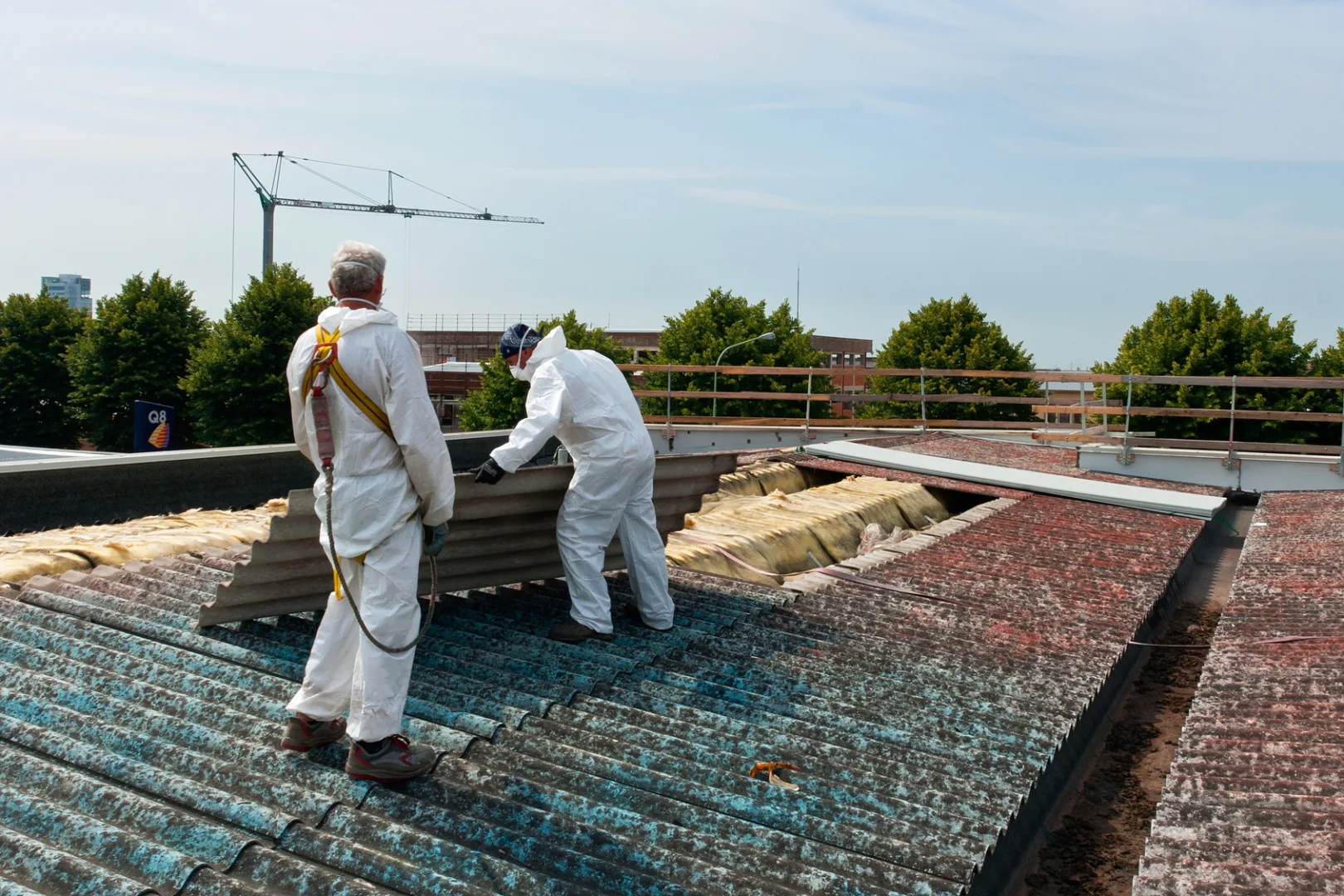Dispose of Asbestos Safely: A Guide for UK Homeowners
Dispose of asbestos safely is a paramount concern for homeowners in the UK. Asbestos, once hailed as a miracle material for its fire-resistant and insulating properties, has now been unveiled as a silent killer lurking in many homes across the UK. This mineral, composed of microscopic fibers, was extensively used in construction and various industries until its ban in the late 20th century. However, its legacy remains, posing severe health risks to individuals exposed to its fibers.
Asbestos exposure can lead to life-threatening illnesses such as lung cancer, mesothelioma, and asbestosis. The microscopic fibers, when inhaled, can embed themselves in the lungs, causing irreversible damage over time. What makes asbestos particularly hazardous is its latency period; symptoms may not manifest until decades after exposure, making early detection and prevention crucial.
In the United Kingdom, where asbestos was once widely used in construction, the issue of safe disposal is paramount. As homes age and undergo renovations or demolition, the risk of disturbing asbestos-containing materials increases. Therefore, understanding how to dispose of asbestos safely is not just a matter of compliance but a vital step in safeguarding public health. In this guide, we’ll delve into the proper methods to dispose of asbestos, ensuring the protection of both homeowners and the environment. Let’s explore the steps necessary to handle this hazardous substance responsibly.
How To Dispose of Asbestos UK?
Safe Handling of Asbestos
When dealing with small-scale, non-friable asbestos, such as floor tiles, it’s essential to prioritize safety at all times. While DIY removal is legal for certain situations, it’s crucial to proceed with caution and consider hiring a professional if there’s any uncertainty or risk involved in the process of disposing of asbestos.
- Identifying Asbestos: Before any removal process, it’s crucial to confirm the presence of asbestos. While visual inspection can provide some indication, professional testing is recommended for certainty.
- Wearing Proper Personal Protective Equipment (PPE): When handling asbestos, ensure you wear appropriate PPE, including respirators, protective suits, gloves, and goggles. This equipment helps minimize exposure to harmful fibers.
- Minimizing Dust: To reduce the release of asbestos fibers into the air, wet the material before removal if it’s safe to do so. This helps to minimize dust and airborne particles, decreasing the risk of inhalation.
- Double-Bagging and Labeling: After removal, double-bag the asbestos waste in thick, leak-proof bags and seal them tightly. Clearly label the bags as “Asbestos Waste” to alert others to the hazardous contents.
Remember, even for seemingly straightforward tasks, consulting a professional is advisable, especially if there’s any doubt about safety or if the asbestos is friable. Dispose of asbestos safely by following these precautions and considering the assistance of certified professionals whenever necessary.

Finding a Certified Asbestos Removal Company in the UK
Professional asbestos removal offers numerous benefits, particularly for larger projects or when dealing with friable materials. Certified professionals possess the expertise and equipment necessary to handle asbestos safely, minimizing the risk of exposure and ensuring proper disposal. By hiring a licensed company, homeowners can have peace of mind knowing that the removal process will be conducted in compliance with strict regulations, protecting both themselves and their environment from harm.
To find a certified asbestos removal company in their area, homeowners can take several steps:
- Research Accreditation Bodies: Look for companies accredited by reputable organizations such as the United Kingdom Asbestos Training Association (UKATA). Certification from these bodies demonstrates that the company meets industry standards for asbestos removal and disposal.
- Check Online Directories: Utilize online directories or databases that list certified asbestos removal companies in the UK. These platforms often provide detailed information about each company’s services, accreditation, and customer reviews.
- Seek Recommendations: Ask friends, family, or colleagues who have undergone asbestos removal for recommendations. Personal referrals can provide valuable insights into the reliability and quality of service offered by different companies.
- Request Quotes: Contact multiple certified asbestos removal companies to request quotes for your project. Be sure to provide detailed information about the scope of work to receive accurate estimates.
- Check References: Before making a decision, ask each company for references from past clients. Contact these references to inquire about their experience with the company, including professionalism, adherence to safety protocols, and overall satisfaction with the service provided.
By following these steps and conducting thorough research, homeowners can identify a certified asbestos removal company that meets their needs and ensures that which company can dispose of asbestos safely. Dispose of asbestos with confidence by entrusting the job to qualified professionals who prioritize safety and compliance.
Is DIY Asbestos Disposal Legal in the UK?
In the UK, DIY asbestos disposal is legal under certain conditions, but strict regulations govern its handling. Homeowners can remove asbestos themselves if it’s non-friable (not easily crumbled) and the area is small. However, for larger projects or friable asbestos, it’s highly discouraged due to the increased health risks.
Regulations vary slightly between England, Wales, Scotland, and Northern Ireland. Homeowners must adhere to specific guidelines outlined by their respective authorities. It’s essential to consult trusted government resources for detailed information on regulations in each region. Attempting DIY removal without proper training and equipment can release harmful fibers into the air, endangering both the individual and others nearby. Therefore, it’s crucial to exercise caution and consider hiring certified professionals for any asbestos removal and disposal projects.
To Dispose of asbestos safely: it’s not just a legal obligation but a crucial step in protecting your health and that of your loved ones. Improper handling of asbestos can have severe consequences, including life-threatening illnesses such as lung cancer and mesothelioma. By prioritizing safe disposal practices and following legal guidelines, homeowners can mitigate these risks and ensure a safer living environment.
It’s imperative to recognize the importance of consulting professionals for asbestos removal projects, especially when dealing with larger-scale or friable materials. Certified asbestos removal companies have the expertise and equipment necessary to handle asbestos safely, minimizing exposure and ensuring proper disposal in accordance with regulations.
Don’t take chances with your health. If you suspect the presence of asbestos in your home or are planning renovations that may disturb asbestos-containing materials, take action today. Contact a professional asbestos removal company for a free consultation and expert guidance on safely disposing of asbestos. Your health and well-being are worth the investment. Dispose of asbestos responsibly and protect yourself and your family for years to come.
FAQs
- What is asbestos, and why is it dangerous?
Asbestos is a mineral that was commonly used in construction due to its fire-resistant and insulating properties. However, when disturbed, asbestos releases microscopic fibers into the air, which, when inhaled, can cause serious health issues such as lung cancer, mesothelioma, and asbestosis.
- Is it legal to dispose of asbestos myself in the UK?
Yes, DIY asbestos disposal is legal under certain conditions, but strict regulations govern its handling. However, it’s highly recommended to consult a professional, especially for larger projects or if the asbestos is friable (easily crumbled).
- How can I identify asbestos in my home?
While visual inspection can provide some indication, it’s best to have professional testing done for certainty. Look for materials commonly known to contain asbestos, such as insulation, floor tiles, or textured coatings.
- What safety precautions should I take when handling asbestos?
When handling asbestos, it’s essential to wear proper personal protective equipment (PPE), including respirators, protective suits, gloves, and goggles. Minimize dust by wetting the material before removal, and double-bag and label asbestos waste clearly for disposal.
- How can I find a certified asbestos removal company in my area?
Research accredited organizations such as the United Kingdom Asbestos Training Association (UKATA) and check online directories for certified asbestos removal companies. Seek recommendations from friends or family, and request quotes from multiple companies before making a decision.
- What are the benefits of hiring a professional asbestos removal company?
Certified professionals have the expertise and equipment necessary to handle asbestos safely, minimizing the risk of exposure and ensuring compliance with regulations. They can also provide peace of mind knowing that the removal process will be conducted responsibly.
- What should I do if I suspect asbestos in my home?
If you suspect the presence of asbestos in your home or are planning renovations that may disturb asbestos-containing materials, contact a professional asbestos removal company for a free consultation. It’s essential to prioritize your health and well-being when dealing with asbestos.






